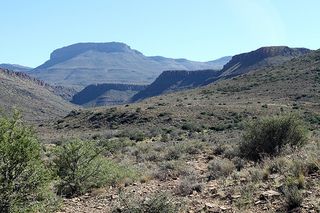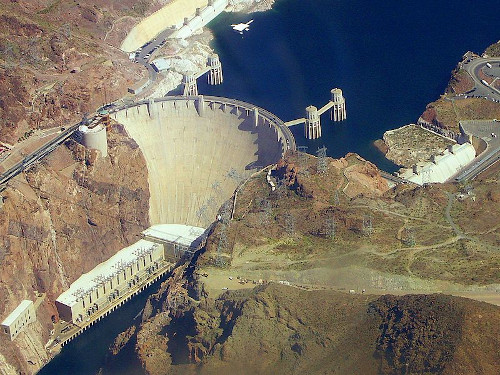23.5 Threats to the hydrosphere
|
Previous
23.4 The importance of the hydrosphere
|
Next
23.6 How pure is our water?
|
23.5 Threats to the hydrosphere (ESAHU)
It should be clear by now that the hydrosphere plays an extremely important role in the survival of life on Earth and that the unique properties of water allow various important chemical processes to take place which would otherwise not be possible. Unfortunately for us however, there are a number of factors that threaten our hydrosphere and most of these threats are because of human activities. We are going to focus on two of these issues: pollution and overuse and look at ways in which these problems can possibly be overcome.
-
Pollution
Pollution of the hydrosphere is a major problem. When we think of pollution, we sometimes only think of things like plastic, bottles, oil and so on. But any chemical that is present in the hydrosphere in an amount that is not what it should be is a pollutant. Animals and plants that live in the Earth's water bodies are specially adapted to surviving within a certain range of conditions. If these conditions are changed (e.g. through pollution), these organisms may not be able to survive. Pollution then, can affect entire aquatic ecosystems. The most common forms of pollution in the hydrosphere are waste products from humans and from industries, nutrient pollution e.g. fertiliser runoff which causes eutrophication (an excess of nutrients in the water leading to excessive plant growth) and toxic trace elements such as aluminium, mercury and copper to name a few. Most of these elements come from mines or from industries.
-
Overuse of water
We mentioned earlier that only a very small percentage of the hydrosphere's water is available as freshwater. However, despite this, humans continue to use more and more water to the point where water consumption is fast approaching the amount of water that is available. The situation is a serious one, particularly in countries such as South Africa which are naturally dry and where water resources are limited. It is estimated that between \(\text{2 020}\) and \(\text{2 040}\), water supplies in South Africa will no longer be able to meet the growing demand for water in this country. This is partly due to population growth, but also because of the increasing needs of industries as they expand and develop. For each of us, this should be a very scary thought. Try to imagine a day without water... difficult isn't it? Water is so much a part of our lives, that we are hardly aware of the huge part that it plays in our daily lives.
As populations grow, so do the demands that are placed on dwindling water resources. While many people argue that building dams helps to solve this water-shortage problem, there is evidence that dams are only a temporary solution and that they often end up doing far more ecological damage than good. The only sustainable solution is to reduce the demand for water, so that water supplies are sufficient to meet this. The more important question then is how to do this.
Creative water conservation
Divide the class into groups, so that there are about five people in each. Each group is going to represent a different sector within society. Your teacher will tell you which sector you belong to from the following: farming, industry, city management, water conservation, tourism or civil society (i.e. you will represent the ordinary “man on the street”). In your groups, discuss the following questions as they relate to the group of people you represent: (Remember to take notes during your discussions and nominate a spokesperson to give feedback to the rest of the class on behalf of your group)
Dry landscape

-
What steps could be taken by your group to conserve water?
-
Why do you think these steps are not being taken?
-
What incentives do you think could be introduced to encourage this group to conserve water more efficiently?
Building of dams
In the previous discussion, we mentioned that there is evidence that dams are only a temporary solution to the water crisis. In this investigation you will look at why dams are a potentially bad solution to the problem.
For this investigation you will choose a dam that has been built in your area, or an area close to you. Make a note of which rivers are in the area. Try to answer the following questions:
A dam

-
If possible talk to people who have lived in the area for a long time and try to get their opinion on how life changed since the dam was built. If it is not possible to talk to people in the area, then look for relevant literature on the area.
-
Try to find out if any environmental impact assessments (this is where people study the environment and see what effect the proposed project has on the environment) were done before the dam was built. Why do you think this is important?
-
Look at how the ecology has changed. What was the ecology of the river before the dam was built? What is the current ecology? Do you think it has changed in a good way or a bad way? You could interview people in the community who lived there long ago before the dam was built.
Write a report or give a presentation in class on your findings from this investigation. Critically examine your findings and draw your own conclusion as to whether or not dams are only a short term solution to the growing water crisis.
It is important to realise that our hydrosphere exists in a delicate balance with other systems and that disturbing this balance can have serious consequences for life on this planet.
School Action Project
There is a lot that can be done within a school to save water. As a class, discuss what actions could be taken by your class to make people more aware of how important it is to conserve water. Also consider what ways your school can save water. If possible, try to put some of these ideas into action and see if they really do conserve water. During break walk around the school and make a list of ll the places where water is being wasted.
|
Previous
23.4 The importance of the hydrosphere
|
Table of Contents |
Next
23.6 How pure is our water?
|
